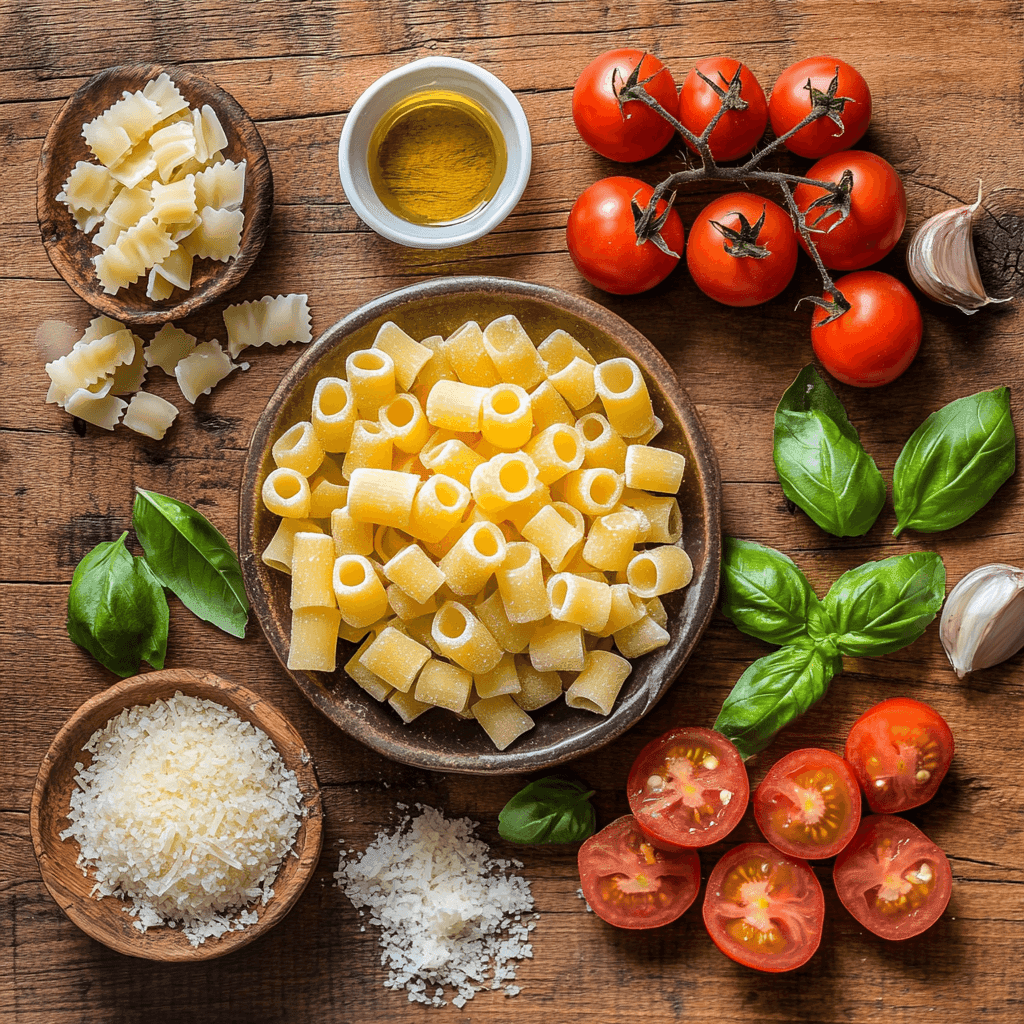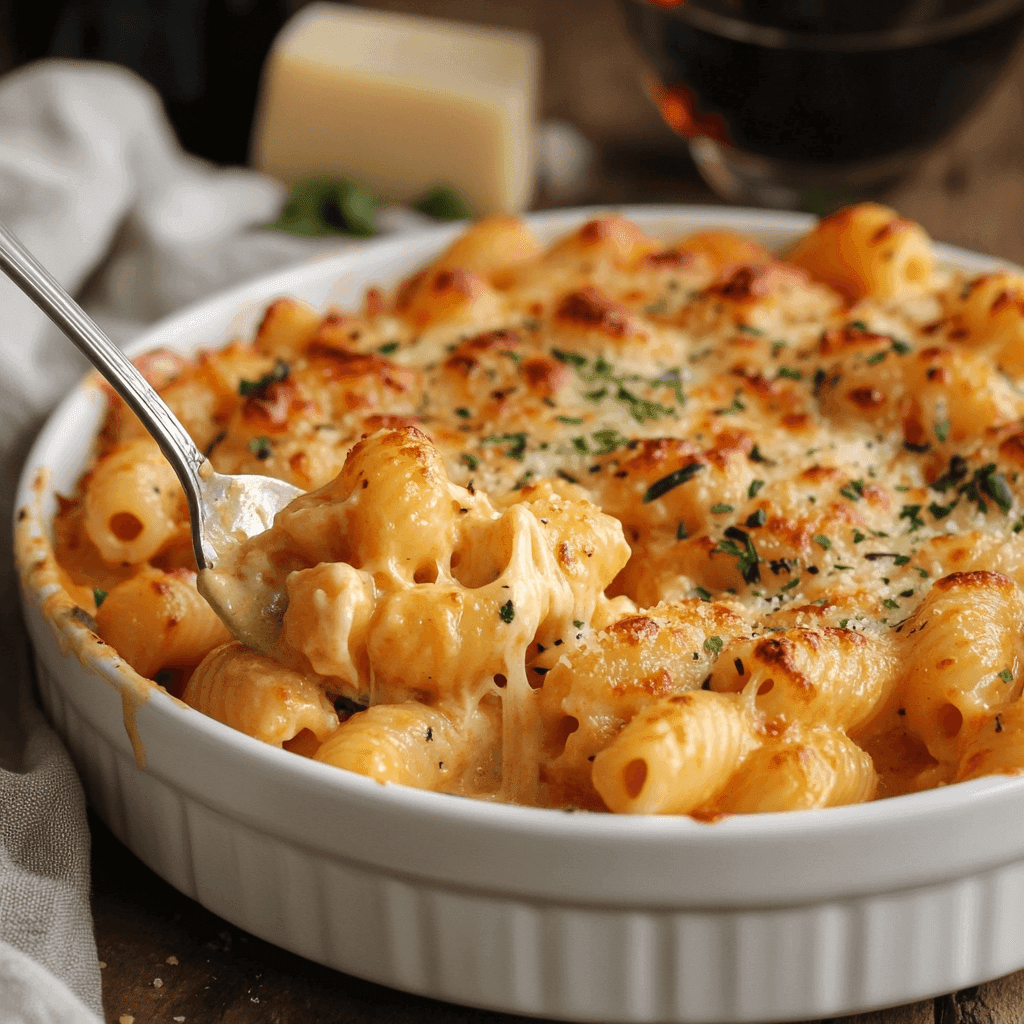Exploring Italian cuisine often leads to Ditalini Pasta, a small, tube-shaped pasta. It’s great in soups, salads, pasta dishes, and casseroles. Getting the right texture and flavor can be tricky, but with the right techniques, you can make amazing Ditalini recipes.
Cooking Ditalini Pasta needs careful attention. The water-to-pasta ratio and cooking time are key. A cup of cooked Ditalini has about 200 calories, offering carbs and protein. For a delicious taste, use high-quality Ditalini Pasta, whether in minestrone soup or creamy pasta with cheese.
Table of Contents
Key Takeaways
- Cooking Ditalini Pasta requires a water-to-pasta ratio of 4-6 quarts per pound to reduce sticking and ensure even cooking.
- Typical cooking time for Ditalini Pasta is around 8-10 minutes for an al dente texture.
- A standard serving of cooked Ditalini contains approximately 200 calories and 42 grams of carbohydrates.
- Whole grain Ditalini options offer a higher fiber content compared to traditional semolina-based versions.
- Ditalini Pasta can be used in a variety of dishes, including soups, salads, and pasta dishes.
- Using Authentic Ditalini pasta and following proper cooking techniques can help you create delicious Ditalini recipes.
- Ditalini Pasta is a good source of carbohydrates, essential for energy, and many products are enriched with iron and B vitamins.
What Is Ditalini Pasta and Its Origins
Ditalini pasta comes from the Puglia region in Italy. It’s called “small thimbles” because of its shape. It’s made from durum wheat flour and water, and is shaped through a process called extrusion.
When you compare Ditalini vs macaroni, Ditalini stands out. Its small, tube shape is about 1.5 cm long. It’s great for soups and salads. You can use it in minestrone and pasta e fagioli, or as a macaroni substitute in salads.
Some key characteristics of Ditalini pasta include:
- Small, tube-shaped structure
- Made from durum wheat flour and water
- Traditionally produced in the Puglia region of Italy
- Often used in soups and salads
- Can be paired with smoother sauces like pesto or creamy sauces
Ditalini pasta is classified as pastina, a small pasta type. It’s dried slowly at low temperatures to keep its color, texture, and aroma. If you’re looking for a traditional Italian pasta or something new, Ditalini is a great choice. It pairs well with other Italian pasta dishes.
Understanding the Unique Shape of Ditalini
Ditalini pasta’s shape is perfect for Ditalini pasta salad and Ditalini soup recipe. Its small, tube shape holds onto sauces and flavors well. This makes it a favorite in many Italian dishes.
Some key features of ditalini include:
- Small, tube-shaped structure
- Hollow shape allows it to cling to sauces
- Ideal for soups and salads, such as Ditalini pasta salad
- Can be used in a variety of Pasta shapes and recipes
When cooking with ditalini, consider the cooking time and method. It can be cooked in boiling water or directly in soup broth. This makes it versatile for many dishes. Its mild flavor and firm texture make it great for Ditalini soup recipe and Ditalini pasta salad.
Ditalini pasta is packed with carbs, protein, and fiber. A 2 oz serving has 200 calories, 41g of carbs, 7g of protein, and 2g of fiber. It’s low in sodium and perfect for many dishes, like Ditalini pasta salad and Ditalini soup recipe.
| Nutrient | Amount per 2 oz serving |
|---|---|
| Calories | 200 |
| Carbohydrates | 41g |
| Protein | 7g |
| Dietary Fiber | 2g |
Essential Equipment for Cooking Ditalini Pasta

To cook ditalini pasta, you need basic tools. A large pot, a strainer, and some other kitchen items are necessary. Having the right tools is key for cooking ditalini pasta well.
In Italian cooking, a big pot is crucial for cooking pasta. You also need a strainer to drain the water. A colander and a wooden spoon are handy too. Here are the essential items:
- Large pot: It should hold at least 4 cups of water and 1 cup of ditalini pasta.
- Strainer: This is for draining the pasta water after cooking.
- Colander: Use it to rinse the pasta with cold water after cooking.
Also, have salt and olive oil ready. With the right tools and ingredients, you can make tasty
How to Choose Quality Ditalini Pasta Brands
When picking the best Ditalini pasta brands, look for quality ingredients and traditional Italian recipes. Authentic Ditalini pasta is made from durum wheat flour. This gives it a better cooking quality and texture. Brands like DeLallo Pasta and Bona Furtuna use organic, non-GMO grain and heirloom wheat. They aim to create an authentic al dente texture.
To get the best Italian food experience, consider these factors when choosing a Ditalini pasta brand:
- Look for brands that use high-quality ingredients and traditional Italian recipes.
- Avoid brands that use artificial preservatives or additives.
- Check the cooking time and texture of the pasta to ensure it’s al dente.
Some popular Best Ditalini pasta dishes include soups like minestrone and pasta fagioli, as well as cold pasta salads. When using Ditalini in pasta salads, you can also consider alternative options like elbow macaroni or orzo. This can give you a different visual and textural experience.
By choosing a high-quality Ditalini pasta brand, you can enjoy a delicious and authentic Italian food experience. Whether you’re making a traditional Italian dish or trying something new, the right pasta can make all the difference.
| Brand | Ingredients | Cooking Time |
|---|---|---|
| DeLallo Pasta | Durum wheat flour | 8-9 minutes |
| Bona Furtuna | 100% organic, non-GMO grain | 8-9 minutes |
Perfect Water-to-Pasta Ratio for Ditalini
When cooking ditalini pasta, the right water-to-pasta ratio is key. Use 4-6 quarts of water for every pound of pasta. This ensures the pasta cooks evenly and stays firm, not sticky or mushy. For Ditalini pasta recipes, following this ratio is crucial to enhance the pasta’s flavor.
To measure the right water, follow these tips:
- Use at least 1 cup of liquid for every 1 cup of pasta.
- The pasta should be just barely covered with water, regardless of the amount being cooked.
Also, add salt to the water to boost the pasta’s flavor. Good quality ditalini pasta has a mild taste and firm texture. It’s ideal for many Pasta cooking tips and dishes.
By following these guidelines, you can cook ditalini pasta perfectly. Remember to adjust the cooking time based on the pasta type. With these tips, you’ll make delicious Ditalini pasta recipes that will wow everyone.
| Pasta Type | Water Ratio | Cooking Time |
|---|---|---|
| Ditalini | 4-6 quarts per pound | 8-10 minutes |
| Short Pastas | 1 part pasta to 2 parts water | 5-7 minutes |
Step-by-Step Cooking Process
To cook Ditalini pasta, start by boiling a large pot of salted water. Use 4 quarts of water for every 2 cups of pasta. Once boiling, add the pasta and cook for 8-10 minutes until it’s al dente.
While the pasta cooks, prepare your sauce. Italian cooking often uses simple, flavorful sauces. For a Ditalini pasta salad, mix cooked pasta with veggies, cheeses, and dressings.
Here are some tips for cooking Ditalini pasta: * Use fresh, high-quality ingredients for the best taste and texture. * Save about 1/2 cup of pasta water before draining. It helps adjust sauce consistency. * Cook the pasta until it’s al dente, then drain and serve with your sauce.
Follow these steps to make a tasty Italian dish with Ditalini pasta. Whether it’s a hearty Ditalini pasta salad or a comforting pasta with sauce,
| Cooking Time | Water Ratio | Salt Recommendation |
|---|---|---|
| 8-10 minutes | 4 quarts per 2 cups of pasta | 1 tablespoon per 4 quarts of water |
Common Cooking Mistakes to Avoid
When cooking ditalini pasta, it’s key to know common mistakes. Overcooking, under-seasoning, and not stirring enough can ruin a dish. To avoid these, use the right water-to-pasta ratio, salt the water, and stir often. This ensures your pasta turns out just right.
Cooking ditalini pasta needs careful attention to avoid mistakes. Use 4-6 quarts of water per pound of pasta and add 1 ½ tablespoons of salt. Also, check the pasta 1-2 minutes before the package suggests. These steps help cook your pasta perfectly.
Timing Issues
Timing is crucial when cooking ditalini pasta. Overcooking makes it mushy, while undercooking makes it too firm. To get it just right, watch the cooking time closely and adjust as needed. This way, your pasta will be firm but not hard.
Temperature Control
Keeping the right temperature is also key. The water should be between 195°F and 205°F. This ensures even cooking and prevents the pasta from becoming too soft or hard. By controlling the temperature, your pasta will always be perfect.
Stirring Techniques
Stirring the pasta is key to stop it from sticking. Stir it a bit, especially in the first two minutes. This makes the pasta smooth and avoids mistakes. Your ditalini pasta dishes will surely impress everyone.
Classic Ditalini Pasta Recipes
Ditalini pasta is a main ingredient in many Italian recipes. It’s perfect for a tasty Ditalini pasta salad with black olives, diced tomatoes, and cheddar cheese. For a cozy meal, try a Ditalini soup recipe with veggies and your favorite protein.
To make a classic ditalini pasta salad, you need 1 pound of pasta, 1/2 tablespoon of salt, and 1 cup of mayonnaise. Chill the dressing for at least 1 hour before serving. You can add peas, hard-boiled eggs, and pickle relish for extra texture and taste.
Here are some nutritional facts about ditalini pasta salad per serving:
| Nutrient | Amount |
|---|---|
| Calories | 331 |
| Carbohydrates | 36g |
| Protein | 6g |
| Fat | 18g |
Some common add-ins for ditalini pasta salad include:
- Black olives
- Diced tomatoes
- Peas
- Hard-boiled eggs
- Dill pickles
- Cubed cheddar cheese
Ditalini pasta is great for many Italian recipes, like Ditalini pasta salad and Ditalini soup recipe. Its mild taste and firm texture make it versatile for various ingredients and sauces.
Storage and Reheating Guidelines
It’s crucial to cool cooked ditalini pasta to room temperature before storing it. This step prevents bacterial growth and keeps the pasta fresh. You can then refrigerate or freeze it for later use. Proper pasta storage is key to keeping the pasta quality and safe.
When cooking ditalini pasta, use low heat and stir often to prevent sticking. You can reheat it in the microwave, on the stovetop, or in the oven. A good quality ditalini pasta has a mild flavor and firm texture, making it great for many ditalini pasta recipes.
Here are some tips for storing and reheating cooked ditalini pasta:
- Store cooked pasta in an airtight container in the refrigerator for up to 3-5 days.
- Freeze cooked pasta for up to 2 months.
- Reheat cooked pasta to an internal temperature of 165°F (74°C) to prevent foodborne illness.
Fresh ditalini pasta has a shorter shelf life than dried pasta. Fresh pasta should be used within 1-2 days when refrigerated, while dried pasta can last up to 2 years when stored properly.
By following these guidelines, you can enjoy your favorite ditalini pasta dishes while keeping them quality and safe.
| Pasta Type | Storage Method | Shelf Life |
|---|---|---|
| Cooked Ditalini Pasta | Refrigerate | 3-5 days |
| Cooked Ditalini Pasta | Freeze | Up to 2 months |
| Fresh Ditalini Pasta | Refrigerate | 1-2 days |
| Dried Ditalini Pasta | Store in a cool, dry place | Up to 2 years |
Pairing Ditalini with Sauces and Ingredients

There are countless ways to pair Ditalini pasta with sauces and ingredients. You can whip up a delicious Ditalini pasta salad with your favorite veggies, meats, and cheeses. For a cozy meal, try a Ditalini soup recipe with veggies and lean proteins.
Ditalini pasta has a mild taste and firm texture. It’s perfect for many Pasta sauces. You can use light sauces like olive oil and garlic, or add veggies, meat, and cheese. Here are some tips for pairing Ditalini:
- Combine cooked Ditalini with roasted veggies and olive oil for a healthy meal.
- Pair Ditalini with chicken, beef, or pork for a hearty meal.
- Try different Pasta sauces like marinara, alfredo, or pesto to find your favorite.
Ditalini pasta is versatile and can be paired with many sauces and ingredients. Whether you’re making a Ditalini pasta salad or a Ditalini soup recipe, experiment to find the best combinations for you.
Nutritional Information and Dietary Considerations
Ditalini pasta is rich in carbs, made mainly from semolina flour. A serving of cooked ditalini has about 200 calories, 42 grams of carbs, and 7 grams of protein. Knowing about Ditalini pasta nutrition is key. Whole grain ditalini has more fiber, helping with digestion.
For Ditalini pasta health benefits, eating enough fiber is good for your gut. Eating ditalini with beans and veggies boosts fiber intake. But, eating too much ditalini can lead to weight gain if not balanced with veggies and proteins.
Choosing whole wheat ditalini boosts fiber by 2-3 grams per serving. Cooking ditalini “al dente” can also help control blood sugar. Being mindful of portion sizes and balancing ditalini in your diet keeps you healthy.
Conclusion
In conclusion, ditalini pasta is a versatile and flavorful ingredient. It can elevate a wide range of dishes. Whether you’re making a classic ditalini pasta recipe or trying new dishes, this pasta is a must-have in your kitchen.
Its mild taste and firm texture make it perfect with many sauces, proteins, and vegetables. You can use it in soups, salads, and pasta dishes. As you explore ditalini pasta, remember to use quality ingredients, follow proper cooking techniques, and add a touch of Italian flair. Buon appetito!
FAQ
What is ditalini pasta and where does it come from?
Ditalini pasta is a small, tube-shaped Italian pasta. It comes from Italy. The name “ditalini” means “little thimble” in Italian, because of its shape.
How is ditalini pasta different from other types of pasta?
Ditalini pasta is small and tube-like. This shape makes it great for holding sauces. It’s perfect for soups, salads, and pasta dishes.
What equipment is needed to cook ditalini pasta properly?
You need a large pot, a strainer, and sometimes a colander and spoon. The right tools help get the pasta just right.
How do you choose a quality brand of ditalini pasta?
Look for brands that use good ingredients and follow Italian recipes. Stay away from pasta with artificial stuff. Good ditalini pasta tastes mild and feels firm.
What is the best water-to-pasta ratio for cooking ditalini?
Use 4-6 quarts of water for every pound of pasta. This keeps it from getting sticky. Don’t forget to salt the water for flavor.
What are some common mistakes to avoid when cooking ditalini pasta?
Don’t overcook it, and make sure to season it well. Stir it often to prevent sticking. Follow the cooking time and add salt to the water.
What are some classic recipes that feature ditalini pasta?
Ditalini pasta is perfect in pasta e fagioli and minestrone soup. It’s also great with tomato sauce. These dishes highlight its ability to hold sauces well.
How should you store and reheat cooked ditalini pasta?
Cool it down first, then refrigerate or freeze it. When reheating, do it slowly and stir often. You can use the microwave, stovetop, or oven.
What are some healthy ways to incorporate ditalini pasta into your diet?
While ditalini pasta is okay, be mindful of the sauce and ingredients. Pair it with veggies, lean proteins, and light sauces. Also, keep an eye on your portion sizes.

